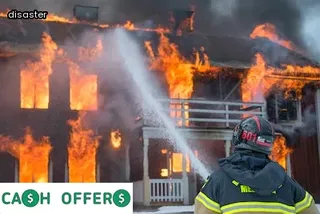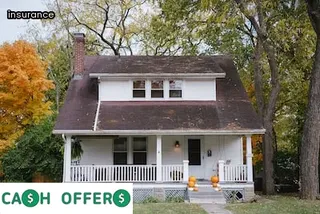Developing a disaster plan is an important step for all homeowners and renters in Minnesota to take in order to recover from the damaging effects of a fire. Having a plan in place can help ensure that everyone involved knows what to do, where to go, and who to contact when facing a fire-related emergency.
Knowing how to access resources like financial assistance, insurance coverage, and other forms of aid is key for victims of fire disasters. Creating a family plan ahead of time will help streamline the recovery process by providing useful information about evacuation routes, nearby shelters, and other helpful services.
By educating yourself on local programs and organizations devoted to helping those affected by fires, you can be better prepared if you find yourself in the midst of an emergency situation. Meanwhile, staying up-to-date with fire safety tips can also help minimize potential risks and reduce the chances of becoming a victim in the first place.

Fire victim assistance in Minnesota is an important and necessary service for helping homeowners and renters rebuild after a disaster. Building resilience through prevention requires proactive planning to reduce the risk of fire damage in the first place.
This includes educating residents on the dangers of fires, implementing safety measures in homes, conducting regular inspections of properties, and providing resources such as smoke detectors and fire extinguishers. Additionally, local governments should create policies and regulations that help protect vulnerable populations from preventable disasters.
By taking these steps, communities can become more resilient before a fire occurs by reducing its potential impact on individuals and families.
In Minnesota, fire victims have access to several emergency services and locations to help them rebuild after a disaster. Fire victim assistance is available through the local government, state agencies, and nonprofit organizations.
These organizations provide immediate support with food, clothing, housing assistance and other essentials. Minnesota also has a number of locations where victims can receive financial aid and resources for recovery.
The American Red Cross offers emergency grants for individuals and families affected by fires as well as community-based service centers that offer additional support. The Federal Emergency Management Agency also provides assistance for those who have experienced loss due to a fire, such as temporary housing assistance or financial aid for repairing or replacing damaged items.
It's important for those affected by fires in Minnesota to seek out the help they need from these various emergency services and locations in order to begin rebuilding their lives.

Best practices in emergency management are crucial for organizations providing fire victim assistance in Minnesota. Having a well-developed plan helps ensure that the needs of homeowners and renters who have been affected by disaster are met.
It is important to identify the appropriate resources needed for such an event, establish a system for communication and collaboration between stakeholders, allocate resources appropriately, and create a framework for assessing response effectiveness. Furthermore, it is essential to provide access to mental health services during and after the incident, develop training programs for personnel involved in the response effort, and incorporate community input into recovery efforts.
These are just some of the best practices that organizations should consider when assisting victims of fires in Minnesota.
In Minnesota, fire victim assistance is an essential part of the long-term recovery process. Homeowners and renters alike can benefit from programs that help them rebuild their homes and lives after a disaster.
These programs include financial aid, housing assistance, and other resources to help victims recover and rebuild. Local government often provides these services through grants, loans, or other support for individuals or families affected by a catastrophic event like a fire.
Additionally, many non-profit organizations offer assistance in the form of community support, legal advice, mental health services and more. These organizations may also be able to provide additional financial or material aid for those in need.
Everyone affected by a fire should take advantage of the available resources so they can begin the process of rebuilding their homes and lives as soon as possible.

In Minnesota, there are a variety of community assistance programs available for fire victims in need of help. From local governments to non-profit organizations, there are a range of resources that can provide support to both homeowners and renters who have been impacted by fire damage.
Local governments may be able to offer grants, tax credits or loans to those affected by the disaster. Non-profit organizations may be able to provide free services such as food and housing assistance, as well as clothing and furniture.
In addition, volunteers often join together within the community to assist with various forms of rebuilding efforts. These groups may be able to provide physical labor, construction materials or financial donations.
Whether it is direct aid or advice on navigating the recovery process, these programs can make a huge difference in helping those affected by fires in Minnesota get back on their feet.
The Minnesota National Guard has stepped in to provide much needed support and assistance for families affected by a disaster. They have set up operations throughout the state to work with local fire departments, giving victims access to resources such as temporary housing, food, medical aid, and even mental health counseling.
The Guard also coordinates with other state agencies and non-profit organizations to ensure that homeowners and renters receive necessary financial aid for repairs and rebuilding efforts. This includes grants from the Federal Emergency Management Agency (FEMA), as well as funds from private foundations and insurance companies.
By providing a coordinated response to disasters, military personnel are helping Minnesotans rebuild their lives after tragedy strikes.

Federal agencies play a critical role in providing relief and response to disaster victims, especially those affected by major fires. In Minnesota, the Federal Emergency Management Agency (FEMA) is the primary agency responsible for coordinating disaster response and recovery.
FEMA provides financial assistance to home and business owners who have experienced property damage from fires. This includes grants to cover repairs, rebuilding or relocation costs.
The Small Business Administration (SBA) also offers loans to help individuals rebuild their homes or businesses after a fire. The U.
Department of Housing and Urban Development (HUD) provides funds to assist renters affected by fires with temporary housing options while their homes are being rebuilt. Additionally, HUD has programs that help homeowners replace furniture and household items lost in a fire.
Finally, the U. Department of Agriculture (USDA) offers Disaster Supplemental Nutrition Assistance Program (D-SNAP), which helps families access food benefits during times of major disaster such as wildfires.
In Minnesota, there are several programs that provide financial assistance to those affected by fire disasters. Grants and other benefits are available to both homeowners and renters who need help rebuilding after a fire.
The Minnesota Department of Employment and Economic Development (DEED) provides grants for uninsured losses due to fires, while the Minnesota Housing Finance Agency (MHFA) provides grants for home repairs. In addition, homeowners can take advantage of low-interest loans from the Small Business Administration (SBA).
For renters, DEED offers rental assistance to help cover temporary costs during recovery efforts. Other forms of assistance include tax relief and utility bill deferment for those affected by fires in Minnesota.
All these programs provide important benefits that can help people rebuild and recover after a fire disaster.

Preparing your home for a natural disaster can mean the difference between surviving and not. Taking the necessary steps to protect your home before disaster strikes is the best way to ensure that you, your family, and your belongings are safe.
Start by making sure that all windows and doors are properly secured; this will help keep out potential flooding and wind damage. Additionally, consider investing in storm shutters or impact-resistant glass for extra protection.
It's also important to trim any trees or bushes around your property that could be at risk of falling due to high winds or heavy rain. Lastly, make sure your gutters and downspouts are able to handle large amounts of water during a storm so you don't have to worry about water entering your home.
Fire victim assistance in Minnesota helps homeowners and renters rebuild after disasters, but it's important to take initiative when it comes to protecting yourself beforehand too.
In the event of an emergency situation, it is important to keep your family safe and secure. The first step is to make sure everyone in the household is aware of potential dangers and knows what to do if disaster strikes.
Be sure that all family members know where to go, such as a safe room or designated meeting place. Have an evacuation plan in place so that each member of the family knows their role in leaving the home quickly and safely.
Make sure that all family members are familiar with how to shut off utilities like water, electricity, and gas when necessary. Additionally, designate a person outside the home who can serve as a contact for everyone during an emergency.
Having a communication plan in place will help ensure that all family members are accounted for during an emergency. Finally, be sure you are familiar with local fire victim assistance programs available in Minnesota so you are prepared to access resources if needed to help rebuild after disaster strikes your home or rental property.

In Minnesota, businesses are increasingly at risk of experiencing the devastating impacts of extreme weather events such as fires. Preparation is key to minimizing damage and ensuring a speedy recovery post-disaster.
Businesses should take proactive steps to mitigate the effects of fires, floods or other natural disasters by creating a plan to inform employees, protect financial records and secure computer systems. Additionally, they should consider investing in backup power sources such as generators, and review insurance policies to ensure their coverage is up-to-date and sufficient for their needs.
Fire victim assistance programs are available in Minnesota that can help business owners rebuild after a disaster, but it's important for them to be prepared before an event occurs.
In Minnesota, community involvement is essential for successful disaster planning and response. Local government officials, faith-based organizations, nonprofits and volunteers are all critical elements of an effective plan.
By working together to provide fire victim assistance, these stakeholders can help homeowners and renters throughout the state rebuild after disaster. Through public education initiatives, community members can understand their role before a crisis hits, such as having an evacuation plan in place or how to access resources during a disaster.
Additionally, local leaders can create systems that support firefighters and first responders. This includes providing housing for those who have been displaced or offering mental health support services for those impacted by the fire.
Finally, engaging with the business sector can provide additional resources to those affected by the fire and ensure they are able to recover swiftly and efficiently.

The creation of local networks of support during an emergency situation is a crucial step in helping people affected by a fire in Minnesota. In order to rebuild after disaster, it is vital that assistance be provided to both homeowners and renters.
This assistance can come in the form of temporary housing, financial aid, and mental health counseling. It is important that these services are coordinated quickly and effectively so that individuals affected by the fire have access to the necessary resources when they need it most.
Additionally, community outreach programs can be implemented to provide additional aid for those who may not qualify for other forms of assistance due to their unique circumstances. Finally, connecting those impacted with local organizations or charities can help them receive the relief they need in order to start rebuilding their lives.
With the right support systems in place, victims of fires in Minnesota will have the guidance and resources they need to begin the process of recovery.
As the long-term effects of a fire disaster come to light, many Minnesotans are left facing an uncertain future. Mental health care and wellness programs are an important part of fire victim assistance in Minnesota.
Post-disaster mental health care is essential for those affected by a home or business fire, both homeowners and renters alike. Supportive counseling services give victims the chance to talk through their experiences and work towards rebuilding their lives.
Wellness programs offer therapeutic activities such as art therapy, meditation classes, or mindfulness exercises that serve as outlets for stress relief and building self-confidence. In addition to providing support groups and individualized counseling, some organizations provide other resources such as access to legal services, financial assistance, housing relocation aid, job search support, and referrals to other community resources.
Fire victim assistance in Minnesota aims to ensure that everyone affected has access to the resources they need – whether it’s emotional support or practical help – so they can move forward in the aftermath of a disaster.

In Minnesota, low-income communities are especially vulnerable to the devastating effects of natural disasters such as fires. Despite their limited financial means, those affected by these tragedies still require assistance in order to rebuild and restore their homes and lives.
Fortunately, there are a number of programs designed specifically to support low-income individuals and families who have been impacted by fire damage. These include grants for homeowners to help cover the cost of rebuilding, rent assistance for renters displaced by the disaster, and other resources like counseling services that provide emotional support.
By providing these essential services, Minnesota is helping its most vulnerable citizens recover from a disaster and get back on their feet.
Financial resources are key to helping fire victims in Minnesota rebuild after a disaster. With limited personal funds, it can be difficult to manage the cost of replacing damaged items and making necessary repairs.
Fortunately, there are several government programs available to assist those affected by a fire. FEMA provides financial assistance for temporary housing, home repairs, and other needs in addition to grants for uninsured losses.
Additionally, the American Red Cross offers financial assistance for basic needs such as food, clothing and shelter. The Minnesota Department of Human Services also provides emergency financial assistance through its Crisis Assistance Program which helps cover expenses such as food, rent or mortgage payments and utility bills.
Furthermore, many local organizations such as churches and charities provide additional support with donations or volunteer services to aid individuals in their recovery from the effects of a fire.
Minnesota emergency assistance is a program that provides financial help to homeowners and renters affected by fire-related disasters in the state. The program helps those affected repair or rebuild their homes, replace lost belongings, and reimburse losses from fire damage.
It also provides resources for mental health services, temporary housing, and other costs associated with recovering from a disaster. With this assistance, Minnesota residents can get back on their feet after their homes have been damaged or destroyed by fires.
The program is funded through state and federal grants and donations from local businesses, organizations, churches, and individuals. In addition to providing direct financial aid to fire victims, the program also works with local agencies to provide educational materials on fire safety and prevention.

In Minnesota, emergency assistance is available to fire victims a maximum of two times per twelve months. Homeowners and renters can receive up to $5,000 in assistance for uninsured losses due to fire, with the funds going toward items such as furniture, appliances, and building materials.
To qualify for fire victim assistance in Minnesota, applicants must have suffered a loss due to an eligible fire disaster, be a homeowner or renter within the declared disaster area, and meet income requirements. Qualifying residents can apply for emergency assistance at any of the state's local service centers or online.
After assessing eligibility and providing financial support towards recovery efforts, the state will provide additional resources including access to counseling services for those affected by the disaster. With help from the state of Minnesota's Fire Victim Assistance Program, homeowners and renters can rebuild and recover after experiencing devastating losses due to natural disasters.
The Federal Emergency Management Agency (FEMA) is the federal agency responsible for helping individuals and families recover after a natural disaster such as a flood. FEMA provides assistance to both homeowners and renters whose homes have been damaged or destroyed by flooding in Minnesota.
This may include direct financial assistance, temporary housing, home repairs, and other resources to help people rebuild their lives. FEMA also works with state and local partners to provide additional support through programs like the Minnesota Disaster Recovery Program that helps homeowners access grants and low-interest loans to repair or replace their homes.
Additionally, FEMA’s Individual Assistance program helps flood victims with their immediate needs including medical care, counseling services, and relocation costs. To learn more about how FEMA is helping fire victims in Minnesota, visit their website or contact your local emergency management office.
In order to apply for Kentucky Disaster Relief, please contact the Kentucky State Emergency Management Agency (KSEMA). The agency will be able to provide assistance with applications for fire victim assistance in Minnesota.
It is important for homeowners and renters to understand the process of rebuilding after a disaster. KSEMA can help guide individuals through the resources available, including financial assistance, housing programs, and additional support services.
To apply for relief, individuals are urged to reach out as soon as possible to make sure they are receiving all of the necessary support they need.
A: The Minnesota Department of Public Safety offers a variety of resources to help homeowners and renters rebuild after a disaster, including emergency financial assistance, home repair grants, and other services.
A: The Red Cross provides financial assistance and Disaster Preparedness information to fire victims in Minnesota.
A: The Charitable Foundation for Disaster-Recovery in Minnesota provides fire victims with access to emergency communication services, such as text messages and phone calls to connect them with other resources.